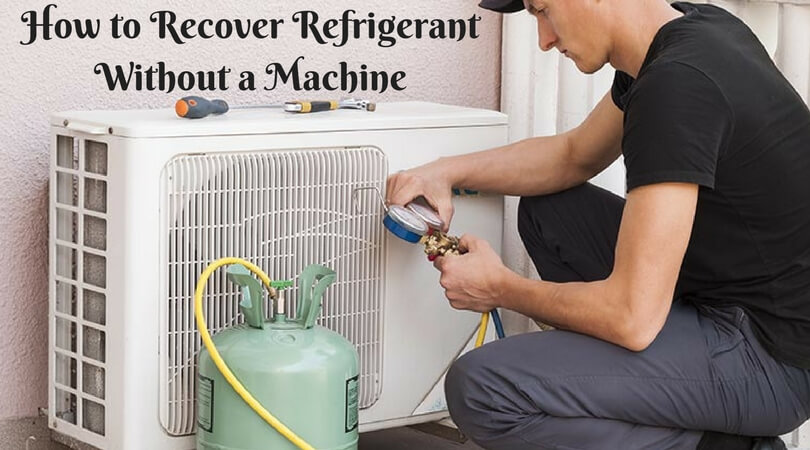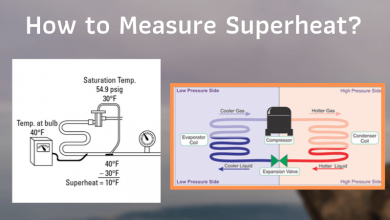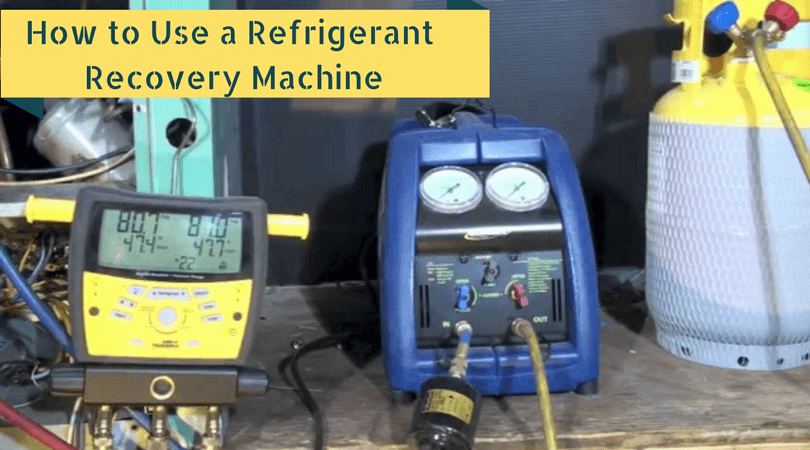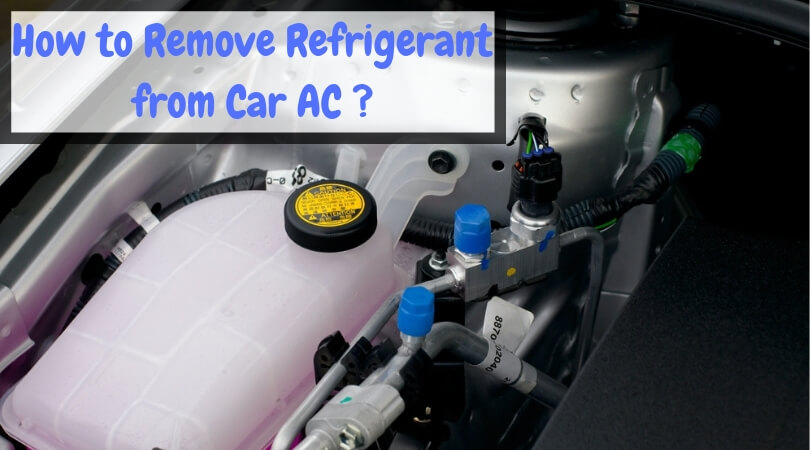How to Recover Refrigerant Without a Machine – Try This New Method

The refrigerant is a substance used for cooling or refrigeration. It is a mixture of the fluid form and plays a vital role in the heat transfer process, which is essential to run air conditioners and heating systems successfully. In most of the equipment, it transits liquid to gas and vice-a-versa. Some of the widely used refrigerants are chlorofluorocarbons, hydrochlorofluorocarbons, hydrofluorocarbons, etc.
Nowadays, the rules have become strict as according to the EPA (Environmental Protection Agency) such refrigerants are becoming a reason for the ozone layer depletion. So, it is imperative to recover refrigerants time to time. Another method people used to follow was to vent refrigerant instead of improving it. But now it is prohibited as it harms the environment under Section 608 of the Clean Air Act.
How to Recover Refrigerant Without a Machine?
As it is compulsory to recover refrigerants, the first step to recover refrigerant legally is obtaining EPA Section 608 Technician Certification. Any technician who adds or removes coolant from air conditioners, cars, refrigerator, etc. or any other HVAC/R equipment must obtain one of the four types of certification.
- Type 1: Serving small appliances
- Type 2: High-pressure heating (AC)
- Type 3: Low-pressure units (Chillers)
- Type 4: Universal certification, which covers type 1 to type 3
Technicians have their set of machines which can solve the issue quickly. But, if you want an absolute and most straightforward, as well as the cheapest way to recover refrigerant to be in EPA compliance without buying any machines, then you should try some gauges & tanks.
Refrigerants Recovery Process Using Gauges and Tanks
Step 1:
Get a recovery tank and put an inline filter on the input of it.
Step 2:
Evacuate the tank and place it in the freezer. It has to be evacuated, or it is possible that the air may mix with the refrigerant.
Step 3:
Connect the gauges to the system and recovery tank with the closed tank valves and open gauge handwheels.
Step 4:
Brake bleed the connection at the tank so that the hoses can pass.
Step 5:
Open the tank handwheel. The tank should be medium in size so that the pressure can rise accordingly.
Note: The tank must be cold so that all the refrigerants can eventually condense in it. If there is air, the whole process might not work well, and most of the air can remain in the vehicle. If the air is not vacuumed correctly, there are chances to fail the process of distilling the refrigerant out of the system.
How to Recover Freon Without Machine?
- In general, recycled refrigerants are those refrigerants which are cleaned using oil separation and passes through some machines such as replaceable core filter – driers and few others for single or multiple times to reduce moistures, acidity, etc.
- To recover such refrigerants, one must understand methods like the liquid, vapor, and push-pull to recover the refrigerant quickly and efficiently.
- At the time of recovery, one must follow the instructions and should go step by step. Taking shortcuts may harm both – you and your equipment.
- Safety is the most essential and primary thing. The person involved in this activity must wear safety goggles and high-quality gloves to prevent frostbite.
- The push-pull method should not be used if the system contains not more than 10 pounds of refrigerant or the equipment is having a heat pump or other unit with a reversing valve.
So, these are the way of recovering refrigerant without a machine and some ‘keep in mind’ points just to ensure that the process you do is quick, efficient, and up to the mark! One can recover the refrigerant during servicing, conversion to the new refrigerant, and before the system is scrapped and disposed of! We just have to understand the system, hoses, valves, and basic knowledge of the various methods and consequences of recovery machines. And, there we are! I hope you have found this article useful. Stay tuned for more information related to the refrigerant.





